The wines of
Ruinart with Frédéric Panaïotis
More geeky Champagne talk with the chef de cave of
Ruinart
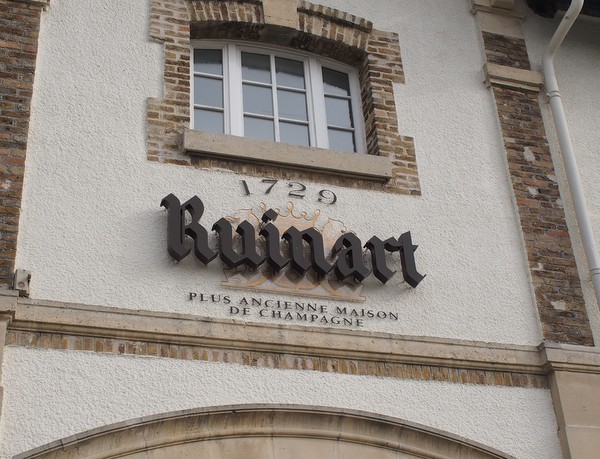
Champagne Dom Ruinart is famous for its Blanc de Blancs, with its
distinctive and quite beautiful bottle shape. I caught up with Chef
du Cave Frédéric Panaïotis (below) to taste a few vintages, and for a bit of
chat. He was quite disclosing, and happy talking technical stuff,
which is very refreshing. We began discussing the 2014 vintage.

'2014
was a good non-vintage year,' he says. 'I'm a little bit less
enthusiastic than what I have seen in the French press. The big
surprise is the northern Montagne de Reims and the Côtes de Bar,
with good quantities. It's definitely a better year for Chardonnay
than Pinot Noir and Meunier, which suffered from the extra rain in
August and September.'
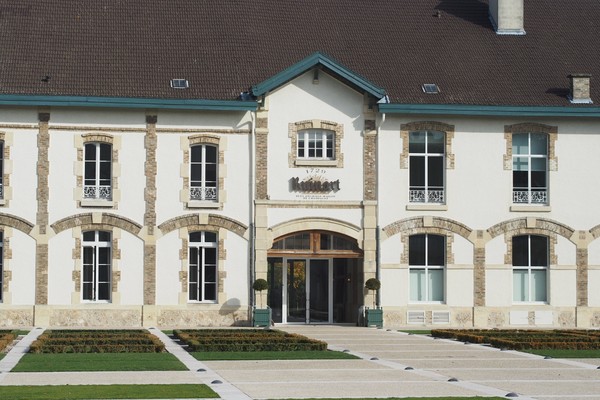
'2014
could have been better, but it could have been way worse. In August
we started to be worried, but September was kind of a miracle.'
It
hadn't been an entirely straightforward vintage in the region.
'There were problems in 2014 with Drosophila suzukii, which
caused sour rot,' he revealed. 'It doesn't see the white grapes, and
just attacks the red grapes. This fruit fly can oviposit through the
skin, and once the skin is open it leads to sour rot. It has
happened before in years where the grapes are growing quickly. When
the skins split towards the end of maturation process then fruit
flies come and you get sour rot.'
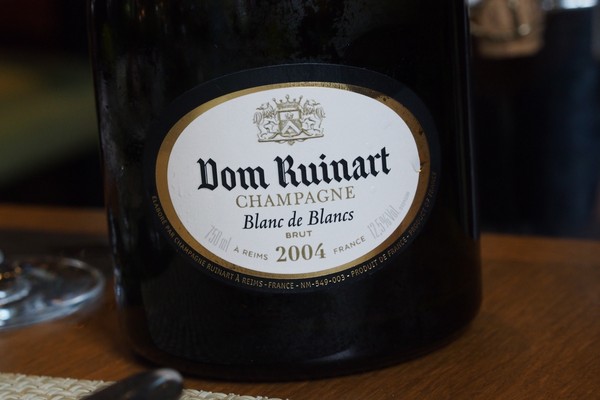
Botrytis was a threat. 'Gluconic acid levels are monitored as an
indication of botrytis, and the numbers were pretty high this year.
In 2012 we have the lowest ever levels of gluconic acid, but it
wasn't a vintage year for us. So numbers are interesting but not
everything.'
We
also talked about the technical details of the second fermentation
in bottle. ‘The slower the fermentation the more oxidative
characters you have,’ says Frederic. ‘With bottles lying flat you
have the fastest fermentation.’ He uses two crown cap liners with
different levels of permeability to oxygen, one for non-vintage and
the other for vintage. What about closures for the final wine? ‘DIAM
is used for half of the NV bottles, but for 10-25 years ageing it is
too much of a bet. I'd rather have 3% cork taint than 100% screwed
bottles.’
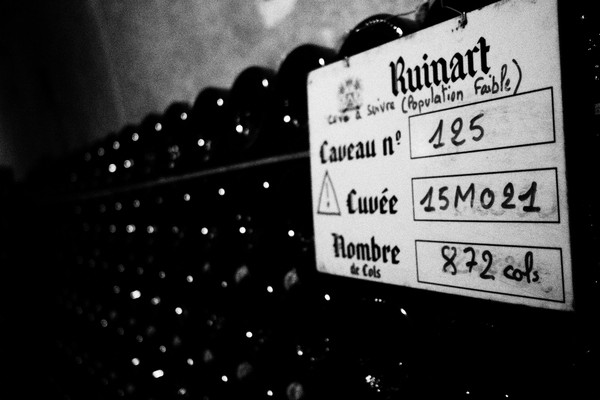
One
thing that has been trialled for the second fermentation is the use
of yeasts encapsulated in a material that allows them to ferment,
but keeps them in one place. ‘Using encapsulated yeasts we found
that the fermentation would take 2 weeks to a month longer.’ He
reveals. ‘Another system that has been tried is called a condom,
with yeasts trapped in a condom a bit like a long bidule, removing
the need to riddle. With this system the fermentation took a month
more and all the bottles showed oxidation. When the yeasts struggle
to get sugar they produce oxidative compounds.’
The
house style at Ruinart avoids oxidative characters. ‘I am looking to
make gently reductive style of wines. Reductive wines show more of
the terroir and grape variety characteristics. Oxidation tends to
hide these. If you ask me to choose between Vin Jaune and German
Riesling, I'd go for the Riesling.’
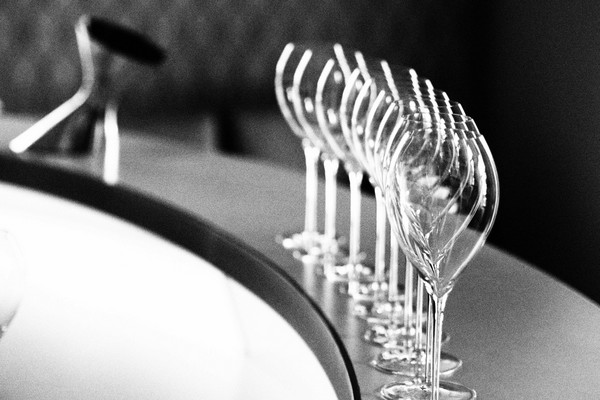
Panaitois is critical of some of the trendy grower Champagnes. 'What
worries me is oxidative style, oak, no malo, no dosage, a
combination that is not forgiving, not what I want to make. I need a
minimum amount of dosage. What is the minimum? 4-5 g/litre. Anything
below this can be a challenge for ageing. 5.5 g/l (in the 2004 Blanc
de Blancs) is the lowest that we have gone.’
He
also has some interesting things to say about acidity. ‘I don't
believe any longer that acidity in Champagne is needed to guarantee
ageing potential. Quite a few low acid years have aged well. We tend
to have enough acidity anyway. In 2003 the pH was 3.2 which is still
quite low.’
Champagne Ruinart
Blanc de Blancs NV (magnum)
This is mainly 2012 base wine and was disgorged 6 months ago. Fine
pear and white peach nose leads to a lovely citrus palate that's
crisp and taut with a bit of spiciness. Very pretty and delicate
with some pithy bitterness. 92/100 (02/16)
Champagne Ruinart Dom Ruinart Blanc de
Blancs 2004
Disgorged June 2013. A fine, well mannered, pure wine that's
expressive with lovely balance, showing pure white peach fruit and
citrus. Pretty and linear with very subtle toast and nice acidity.
Everything in balance. 92/100 (10/14)
Champagne Ruinart Dom Ruinart 2004 France
July 2013 digorgement, 5.5 g/l dosage. Toasty, fine and expressive
with some nice nuttiness. Lovely taut lemony character: so
expressive and pure. 94/100 (02/16)
‘2004
has similarities to 2014: a big crop saved by a warm September. The
Chardonnay was potentially 85-90 hl/ha. Three years ago I was
worried: 2002 was so good that 2004 wouldn't look good, but since
disgorgement 2004 has come up nicely and developed. I don't think
it's a weak year.’
‘We
always do malo. We use the work Moët
has done with yoghurt producers to understand malolactic
fermentation, and have tried to reduce the level of diacetyl, with
combinations of yeast and bacteria. It is interesting to the
interactions of yeast strains and bacteria.’
‘Dom
Ruinart is Burgundian and I'm looking to make it more Burgundian.
2004 is more Chablis in style. 2002 is more Puligny.’
Frederic doesn't just rely on Côtes de Blancs Chardonnay, but also
takes some from the Montagne de Reims. 'The Chardonnay from here is
a bit punchy,' he says. He usually uses a third to two-thirds from
here.
Champagne Ruinart Dom Ruinart Blanc de
Blancs 2002
Disgorged March 2012, 6.5 g/l dosage. Very fine, expressive and
complex with lovely toast notes and complex citrus. Powerful,
complex and grippy. Very detailed and intense, with finesse and
complexity. Nice toastiness, fine citrus notes and a bit of peachy
richness, as well as a hint of apricot. 94/100
(10/14)
Champagne Ruinart Dom Ruinart 1998 France (magnum)
Disgorged March 2009, with a dosage of 7.5 g/litre. This is drinking
beautifully, with lively, spicy, toasty richness. Savoury, spicy and
vivid with lovely acidity under the white peach, pear and lemon
fruit. Linear and nutty, this is at its peak now. 95/100 (02/16)
Champagne
Ruinart Dom Ruinart Blanc de Blancs 1993
Disgorged around a
decade ago, with a 9 g/l dosage. Full yellow colour. Very rich, fine
and toasty with powerful notes of peach and citrus. Very fine and
fresh with hints of notes and buscuits, as well as toasted almonds
and dried fruit. So lovely. 94/100 (10/14)
Champagne Ruinart Dom Ruinart Rosé 2002
Disgorged September 2012 with 5.5g/l dosage. Pinot Noir comes
from Verzenay, where it’s possible to make more delicate red wines.
Pale pink in colour. Lovely delicate cherry and plum notes. Tight
and pure with fine cherry fruit. Very stylish with elegance and
finesse. Lovely. 93/100 (10/14)
See
also:
 Geeky
Champagne talk with Benoit Gouez, Moet et Chandon Geeky
Champagne talk with Benoit Gouez, Moet et Chandon
 Champagne
Charles Heidsieck Champagne
Charles Heidsieck
 Taittinger
Comtes de Champagne vertical Taittinger
Comtes de Champagne vertical
 Focus
on Grower Champagnes Focus
on Grower Champagnes
Wines
tasted as indicated month/year
Find these wines with wine-searcher.com
Back
to top
|

